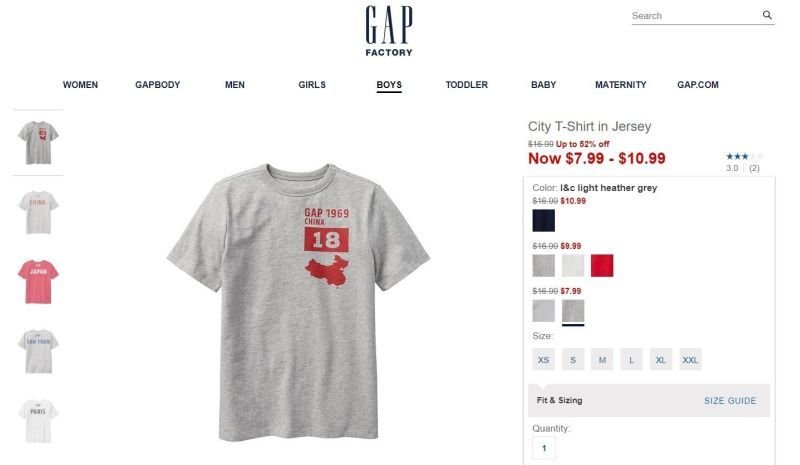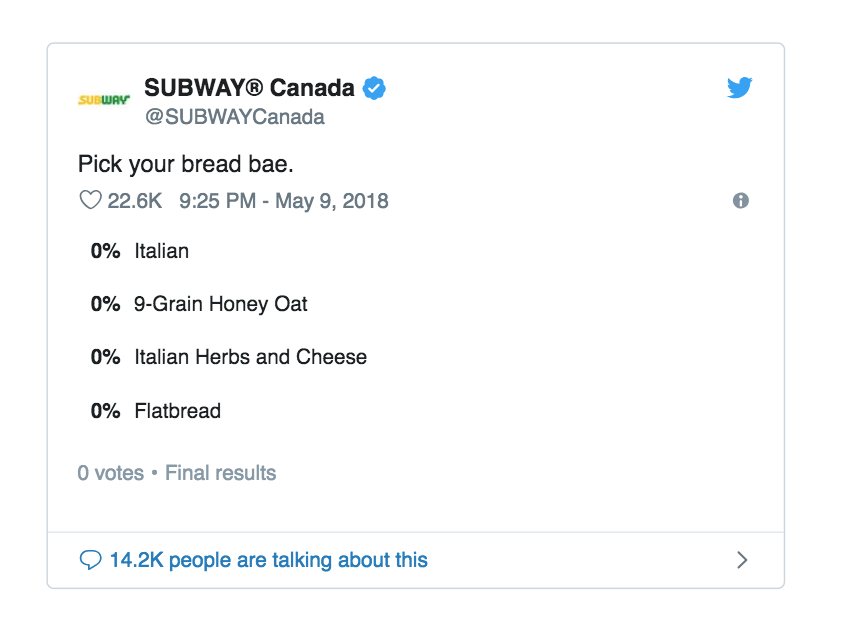Despite being a lengthy, time and resource-demanding process, it does provide businesses with explosive growth, when executed correctly. In this article, however, I’ve compiled a list of tips that will help you localize your online presence, in order to attract a more significant number of potential customers. So here goes:
Localize the brand name, if needed
Re-creating a logo for a foreign audience is tricky. There is a huge variety of factors that come into play. The most common problem that’s really hard to tackle in localization is aligning what we “see” behind our brand and how foreign citizens will “see” it through their own cultural lens.
There are dozens of famous examples of poorly localized products, my personal favorite is the Iranian detergent that was imported to the US with its transliterated brand name — “Barf,” which is the equivalent of “snow” in Farsi. While this is obviously a big mistake on the marketing department’s side, it does allude to a more subtle aspect of localization — linguistic peculiarities.
If you’re an American or European company, looking to localize your product for the Asian market, chances are you’re going to need to make some changes in the name of the brand. The main reason is that we write differently and we pronounce things differently, this is why, brands often need to make significant adjustments to their logos and the brand names displayed on their logos.
Here are some useful logo localization tips:
- Do some phonetic research and find out whether there are any sound combinations that the speakers of the target market find hard to pronounce.
- Maintain the original color scheme. Bear in mind, many cultures react differently to colors.
- Preserve the original font.
So why is this important? Ease of pronunciation is absolutely essential for a product to flourish in a market. Would you tell your friends about this amazing new service I’m using, which has a name that is hard to pronounce? Of course not.
Use cultural content to cater to a new region
Small symbols can carry an immense cultural baggage, they vary significantly from country to country. Adding cultural content to your localization strategy is a viable way of bridging the gap between your brand and a foreign market; and these elements can be both incorporated into your logo, your content, and most importantly, your social media presence.
A culture is a framework through which we see the world and a toolset for us to operate in it. Therefore, we can say that our culture partly defines the products we consume, along with the way we apply them to our everyday lives. In order to make a product more appealing a particular target audience, it is imperative that the product owners align some of its facets with the local cultural standards and commons.
- A common mistake brands make when localizing a product’s presence online is thinking that a country is by default monolingual. A good idea is to localize your media presence for multiple local dialects.
- Incorporate historical elements and cultural values. However, be very careful with when doing so, as a mistake may severely damage your brand’s reputation. Collaborate with a cultural consultant.

An example of a huge mistake a brand had made in respect to the cultural element of a country is Gap’s incorrect representation of China’s map on a T-shirt they’ve produced.
Don’t just localize text, localize social media keywords
Applying the same social media strategy for two different markets won’t necessarily provide the same results. The way you should approach optimizing keywords on social media platforms is pretty much similar to how you would do it for your company’s website.
Think about how people would look for your services in the target market, what are the central keywords that people will use? Simply translating keywords from English won’t work, by any means.
Here’s how you should approach this issue:
- Define the category of services that your service fits in. Think of it this way — if someone would be talking about your company, without knowing its name, how would they call it? Although it seems like a straightforward question, there is a broad spectrum of answers. You need to find the most common set of keywords for this category.
- Also, think of a keyword that you would like to be associated with.
- Check for keyword availability. Make sure that there won’t be any overlap with the local competitors.
- Combine the keywords and integrate them into your social media platform headlines and when linking and tagging your pages.
The reason these keywords need to be localized and not translated is simply due to the way such queries are structured. The way we type requests on search engines and social media platforms isn’t normalized, standard language, it’s instead a caricature of how we speak:
- What is the most trustworthy water distribution company in Boston?
- Best water distribution boston
There is a massive difference between the two, this is we need to approach keyword localization with as much precision as possible.
Localize your existing social media content
Unlocalized content might be slightly exclusive of the markets you’re about to enter. A European Portuguese user will undoubtedly understand Brazilian Portuguese, but will the copy excel at creating a strong emotional bond with the potential customer? Most probably not.
The greatest thing about localization is that it is inclusive, democratic, and human-centric. It cares about how a people that are part of a particular culture will react to a specific string of text, and not how to adapt a copy to the linguistic canons better.
Let’s look at it this way — here are the countries that list Portuguese as their official language:
- Portugal
- Brazil
- Mozambique
- Guinea-Bissau
- Timor-Leste
- Cape Verde
- São Tome e Principe
- Angola
Simply translating your social media content in Portuguese means applying the standard European cultural elements for countries that do not necessarily share them. They may not have the same humor, weather, history, puns, stylistic standards, and a million other issues that will not make your content compelling.
And the research is suggestive of the fact that customers care about the product and social media localization. In this study, companies have rated the importance of localization in achieving higher revenue; and nearly 40% of the respondents have marked it as the most crucial factor.
So what’s the takeaway?
If you don’t have too much blog content to localize, it is essential to localize whatever content you publish on social media, that includes posts, images, ads, whatever contains text, as it naturally drives much more engagement.
Tap into netspeak
You may also want to adjust the language you use in your localized text in accordance with the demographic you’re catering to. For instance, if you’re selling skateboards, there’s no point in focusing on canonic language, but rather flirt with more youth-oriented speech. Whereas if you’re selling golf accessories — it would be odd to opt for slang and colloquialisms. Golf players don’t use “lol jk, my dude” in their social media interactions, at least they’re not expected to.
The critical aspect of using slang in your localized social media campaigns is not to overdo it. Using too much slang will make your brand look unnatural and will make it look like it’s trying too hard. This also can be a slippery slope. Research suggests that the youth can spot improper usage of slang and colloquialisms and it makes the brand look bad.

Subway has experienced it first-hand that trying to use slang that is slightly dated will seriously deteriorate engagement.
This is why it is essential to consult a specialist that is versed in the youth’s vernacular and is continuously informed about the linguistic trends of a particular demographic.
If localizing for an English-speaking market, it is always a good idea to consult the Urban Dictionary to get some suggestions on what slang is popular at this moment in a particular region.
The take-home message
Despite localization being quite a lengthy and complicated process that demands scrupulous research, there are quick ways to localize your online presence, especially when it comes to social media.
Start off by localizing your logo and adapting it to the target country’s liking, but focus on remaining recognizable. Use cultural content to create an emotional connection with your new potential customers. Be aware of their holidays and acknowledge their individuality as a culture. However, be very careful about getting your information right.
Thirdly, don’t just translate social media keywords, but rather localize them. Research how a potential customer from the target country would look for a company like yours.
Localize your social media content — this is a quick way and a rather inexpensive way of adjusting your social media presence to a new culture. This is an excellent option if you don’t have the funds to run a full-scale, deep localization; or if you’re just looking to test the waters and see how localizing your content will perform for your company.
And finally, don’t forget to speak the language of the people. Tap into the current language of your target market. Spice your social media presence with some relevant slang and colloquialisms.
Author Bio:
Pauline speaks Portuguese, English, Spanish and Italian and currently she works as a translator at translation service TheWordPoint. She travelled the world to immerse herself in the new cultures and learn languages. Today she is proud to be a voting member of the American Translators Association and an active participant of the Leadership Council of its Portuguese Language Division.

Comments
0 comments